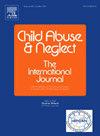使用监督机器学习和ICD10在马里兰州卫生服务成本审查委员会数据集中识别儿科创伤患者的非意外创伤。
IF 3.4
2区 心理学
Q1 FAMILY STUDIES
引用次数: 0
摘要
背景:在儿科创伤患者中识别非意外创伤(NAT)具有挑战性。我们开发了一个机器学习模型,该模型使用人口统计学特征和ICD10代码来检测首次诊断的nat。方法:我们分析了马里兰州卫生服务成本审查委员会(2015-2020)0-19岁患者的数据。确定与NAT和创伤相关的ICD10编码。分析患者首次创伤诊断前的健康记录。随机森林模型是通过惩罚正则化选择的协变量建立的。对已确认的NAT和疑似NAT建立模型,将数据分成80/20分割进行模型训练和测试。结果:我们分析了128,351例非NAT创伤患者、522例确诊NAT患者和2128例疑似NAT患者,共计364,217例。变量选择为模型开发确定了55个确定NAT的协变量和65个可疑NAT的协变量。这些协变量主要是头部和四肢的肌肉骨骼损伤。模型试验结果总结如表1所示。结论:我们的研究使用机器学习来识别儿科创伤队列中的NAT。在第一次创伤诊断之前分析ICD10类别可能有助于更早地发现NAT。需要进一步研究使用ICD10代码构建学习模型,以更好地了解临床医生和计费偏见如何影响预测模型。有监督的机器学习可以潜在地增强临床决策和加强儿科创伤护理。本文章由计算机程序翻译,如有差异,请以英文原文为准。
Using supervised machine learning and ICD10 to identify non-accidental trauma in pediatric trauma patients in the Maryland Health Services Cost Review Commission dataset
Background
Identifying non-accidental trauma (NAT) in pediatric trauma patients is challenging. We developed a machine learning model that uses demographic characteristics and ICD10 codes to detect the first diagnosis of NAT.
Methods
We analyzed data from the Maryland Health Services Cost Review Commission (2015–2020) for patients aged 0–19 years. Relevant ICD10 codes associated with NAT and trauma were identified. Health records preceding the patients' first trauma diagnosis were analyzed. Random forest models were built using covariates selected through penalized regularization. Models were developed for confirmed and suspected NAT. Data was divided into 80/20 split for model training and testing. We conducted analysis in R.
Results
We analyzed 128,351 non-NAT trauma patients, 522 confirmed NAT patients, and 2128 suspected NAT patients totaling 364,217 encounters. Variable selection identified 55 covariates for confirmed NAT and 65 for suspected NAT for model development. These covariates were primarily musculoskeletal injuries of the head and extremities. Model testing results are summarized in Table 1.
Conclusion
Our study uses machine learning to identify NAT within the pediatric trauma cohort. Analyzing ICD10 categories before the first traumatic diagnosis may allow for earlier detection of NAT. Additional research in building learning models with ICD10 codes is needed to better understand how clinician and billing biases may impact predictive models. Supervised machine learning can potentially augment clinical decision-making and enhance pediatric trauma care.
求助全文
通过发布文献求助,成功后即可免费获取论文全文。
去求助
来源期刊

Child Abuse & Neglect
Multiple-
CiteScore
7.40
自引率
10.40%
发文量
397
期刊介绍:
Official Publication of the International Society for Prevention of Child Abuse and Neglect. Child Abuse & Neglect The International Journal, provides an international, multidisciplinary forum on all aspects of child abuse and neglect, with special emphasis on prevention and treatment; the scope extends further to all those aspects of life which either favor or hinder child development. While contributions will primarily be from the fields of psychology, psychiatry, social work, medicine, nursing, law enforcement, legislature, education, and anthropology, the Journal encourages the concerned lay individual and child-oriented advocate organizations to contribute.
 求助内容:
求助内容: 应助结果提醒方式:
应助结果提醒方式:


